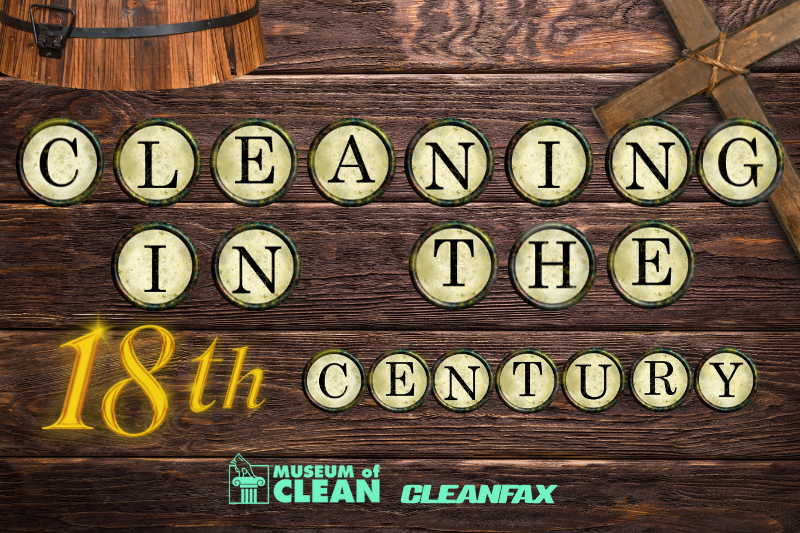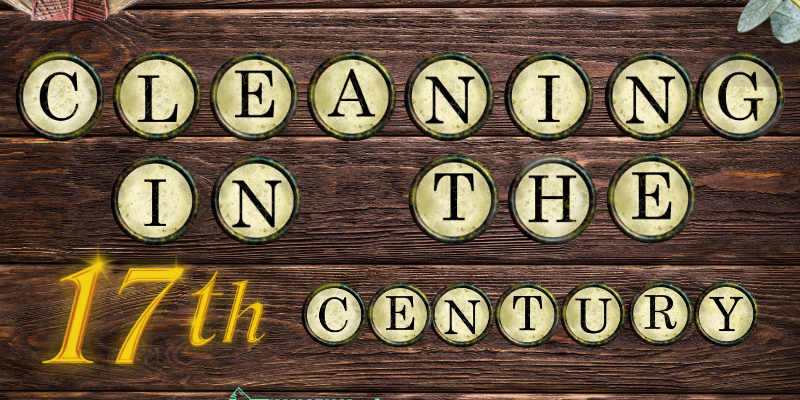The Rise of Cleanliness in the 18th Century

For our next edition of The Origins of Clean brought to you by Cleanfax in partnership with The Museum of Clean, we’ll cover cleaning in the 18th century. This was when a significant shift in how cleanliness was perceived began. It’s also when hygiene finally started to make sense to the masses. Learn more about this drastic shift below!
Common cleaning practices of the 18th century
The 18th century witnessed a significant shift in attitudes toward cleanliness and hygiene. During this period, cleanliness began to be viewed as a virtue, and people started adopting new cleaning practices to maintain a clean and healthy environment. While some of these practices may seem antiquated by today’s standards, they marked a significant departure from the unsanitary conditions that prevailed in earlier times.
One of the standard cleaning practices of the 18th century was sweeping. Floors were usually made of wood, stone, or packed earth and were cleaned regularly using brooms made from natural materials such as twigs or straw. This helped to remove dirt, dust, and debris from the floors and was often accompanied by shaking out rugs and carpets to dislodge accumulated dirt.
Cleaning household items was also a common practice. For example, dishes and utensils were washed using water, soap, and sometimes sand or ash as a scrubbing agent. Linens and clothing were washed using large wooden tubs, often outdoors, and soap made from animal fat or lye was used to remove dirt and stains. Sunlight was also utilized as a natural bleaching agent to whiten fabrics.
In addition to manual cleaning, there were also specialized tools and methods for cleaning specific items. For instance, brass and copper items were polished using vinegar, salt, or abrasive powders like rottenstone, while silverware was washed with a paste made from whiting and water. These methods helped to restore the shine and luster of metal objects, which were considered a sign of cleanliness and affluence.
Overcoming antiquated and unsanitary cleaning methods
Despite the efforts towards cleanliness in the 18th century, many cleaning methods were still antiquated and unsanitary by modern standards. One of the prevalent practices was using chamber pots as indoor toilets. These pots were emptied into outdoor privies or streets, resulting in foul odors and unsanitary conditions. Waste management was a significant challenge, and cities struggled to find ways to dispose of human waste properly.
Another challenge was the lack of proper sewage systems. Most cities did not have organized sewage systems, and waste was often discharged into rivers, causing pollution and contamination of water sources. As a result, waterborne diseases like cholera and dysentery were rampant, and cleanliness was compromised.
In addition, personal hygiene practices were not as thorough as today. Regular bathing was still uncommon; many people would go without washing their bodies for extended periods. Clean water was often scarce and expensive, making regular bathing a luxury that only the affluent could afford. This resulted in body odor and skin conditions being prevalent among the general population.
Furthermore, understanding germs and their role in disease transmission was limited during the 18th century. There was a lack of awareness about the importance of handwashing. People often used shared utensils and towels, spreading germs and diseases within households and communities.
Despite these challenges, significant strides were made toward improving cleanliness in the 18th century. The emergence of the Enlightenment period brought about a new emphasis on reason, science, and rationality, which helped to advance knowledge about hygiene and sanitation. Medical professionals started advocating for cleaner practices, and the importance of cleanliness in preventing the spread of diseases began to gain recognition.
As professionals in cleaning and hygiene, it is truly remarkable to witness the significant advancements we have made in our methods and practices. The revolutionizing changes in cleaning techniques have come a long way, and it is exciting to envision what the future may hold for cleanliness and hygiene.
Visiting the Museum of Clean can provide valuable insights into the historical evolution of cleanliness practices for those interested in learning more about the origins of cleanliness. Stay tuned for our upcoming article next month, where we will delve further into what cleaning looked like in the 1920s, exploring the societal shifts, challenges faced, and progress towards a cleaner and healthier environment.











